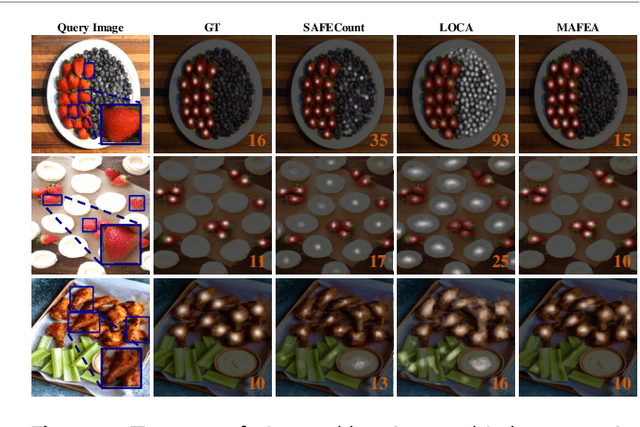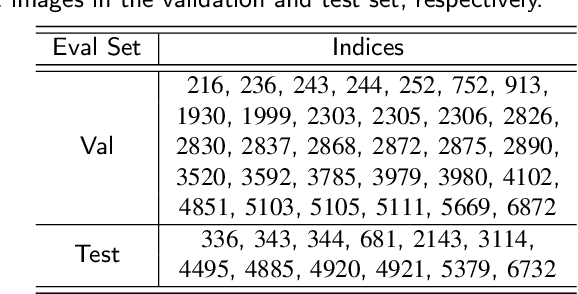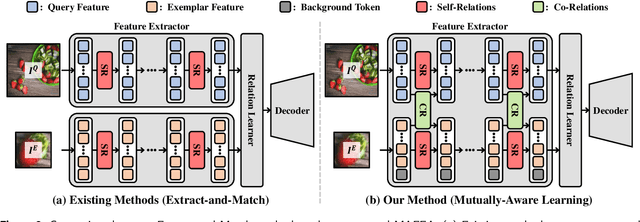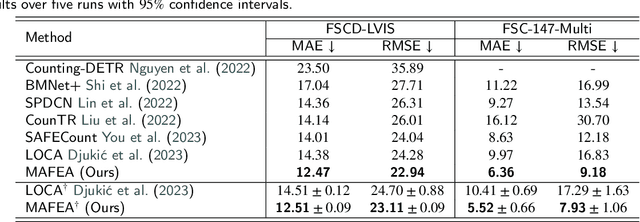Yerim Jeon
Mutually-Aware Feature Learning for Few-Shot Object Counting
Aug 19, 2024



Abstract:Few-shot object counting has garnered significant attention for its practicality as it aims to count target objects in a query image based on given exemplars without the need for additional training. However, there is a shortcoming in the prevailing extract-and-match approach: query and exemplar features lack interaction during feature extraction since they are extracted unaware of each other and later correlated based on similarity. This can lead to insufficient target awareness of the extracted features, resulting in target confusion in precisely identifying the actual target when multiple class objects coexist. To address this limitation, we propose a novel framework, Mutually-Aware FEAture learning(MAFEA), which encodes query and exemplar features mutually aware of each other from the outset. By encouraging interaction between query and exemplar features throughout the entire pipeline, we can obtain target-aware features that are robust to a multi-category scenario. Furthermore, we introduce a background token to effectively associate the target region of query with exemplars and decouple its background region from them. Our extensive experiments demonstrate that our model reaches a new state-of-the-art performance on the two challenging benchmarks, FSCD-LVIS and FSC-147, with a remarkably reduced degree of the target confusion problem.
Boundary-Recovering Network for Temporal Action Detection
Aug 18, 2024Abstract:Temporal action detection (TAD) is challenging, yet fundamental for real-world video applications. Large temporal scale variation of actions is one of the most primary difficulties in TAD. Naturally, multi-scale features have potential in localizing actions of diverse lengths as widely used in object detection. Nevertheless, unlike objects in images, actions have more ambiguity in their boundaries. That is, small neighboring objects are not considered as a large one while short adjoining actions can be misunderstood as a long one. In the coarse-to-fine feature pyramid via pooling, these vague action boundaries can fade out, which we call 'vanishing boundary problem'. To this end, we propose Boundary-Recovering Network (BRN) to address the vanishing boundary problem. BRN constructs scale-time features by introducing a new axis called scale dimension by interpolating multi-scale features to the same temporal length. On top of scale-time features, scale-time blocks learn to exchange features across scale levels, which can effectively settle down the issue. Our extensive experiments demonstrate that our model outperforms the state-of-the-art on the two challenging benchmarks, ActivityNet-v1.3 and THUMOS14, with remarkably reduced degree of the vanishing boundary problem.
 Add to Chrome
Add to Chrome Add to Firefox
Add to Firefox Add to Edge
Add to Edge